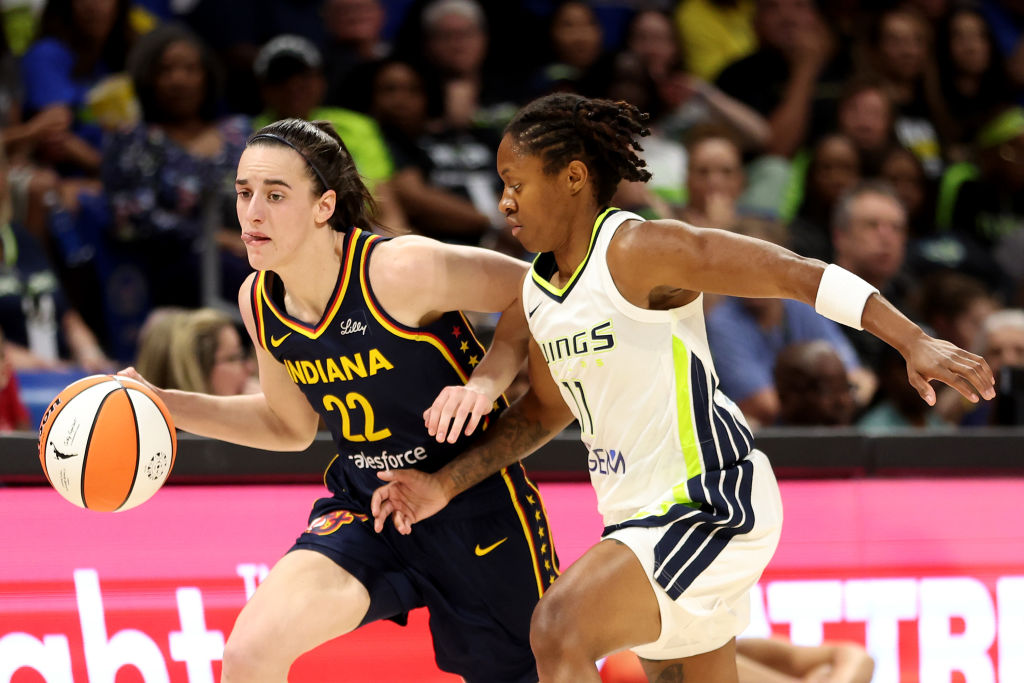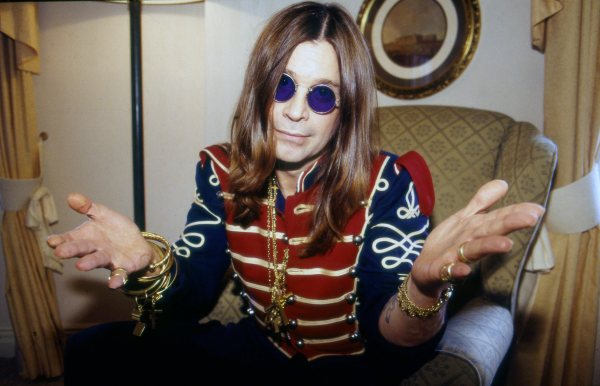Caitlin Clark screamed and grabbed at her left ankle as she fell to the floor in the second quarter of Monday night’s Indiana Fever-Connecticut Sun game. The rookie sensation grimaced, limped gingerly to the sideline and slammed her hand on the bench before disappearing into the tunnel to the training room with 5:37 left in the half.
The crowd at Indianapolis’ Gainbridge Fieldhouse gasped, then fell silent. A Monday-night ESPN audience held its collective breath. One can only imagine how WNBA commissioner Cathy Engelbert reacted.
You know who Clark is by now: the ponytailed TV-ratings bonanza who set the NCAA’s all-time scoring record—for men and women—and led the Iowa Hawkeyes to back-to-back championship game appearances.
The scoring record wasn’t the only one she set. During her romp through the Big Ten and March Madness the last two seasons, highlighted by her trademark “logo 3-pointers” from more than 30 feet out and video-game scoring numbers, the Iowa Hawkeyes shattered both TV-ratings and attendance records. The women’s championship game between Iowa and South Carolina in March averaged 18.9 million viewers—outdrawing the men’s title game for the first time ever. After the Fever made Clark the first pick in April’s WNBA draft, the apparel site Fanatics reported that her jersey was the best-seller for any draft pick in history.
Yet, in the second quarter of a tightly contested game, Clark was out of public view and the game, somehow, went on. The winless Fever hung with the undefeated and veteran Sun, and even led 44-41 at halftime. For five minutes, the women’s basketball world fretted and pondered the “what-ifs.”
What if we have to go back to life without Caitlin Clark?
A mere season ago, it took the Fever eight home games to draw more than 34,000 fans. This season, they’ve done it in two. For the first time in the league’s 27-year history, three teams—the two-time defending champion Las Vegas Aces, the Atlanta Dream, and the Dallas Wings—sold out their season-ticket allotment.
TV ratings are booming and teams are moving to bigger venues to accommodate larger crowds for when Clark and the Fever come to town. And the league has agreed to have teams fly charter flights as opposed to commercial ones, which has been the standard practice since the league’s 1997 inception.
The “Caitlin Clark effect” is real, make no mistake.
But, for a league that has seen its pendulum of popularity swing both directions, is it sustainable? Is it really real?
On Monday night, Clark had her sprained ankle taped, came out of halftime with her teammates and nearly led the Fever to its first win. She scored 17 points and hit the longest shot of her young career—a 33-footer that put Indiana up 70-68 with 7:17 to play. The bucket elicited a deafening roar from the home crowd prompting ESPN scribe Alex Philippou to tweet the following:
The roars we’re hearing aren’t exactly unprecedented, but they do represent a resurgence. The WNBA commanded a fair amount of attention for much of its first decade, but the league had come to barely register a murmur in the mainstream sports headspace.
Through the league’s first six seasons, when it boasted an average game attendance of more than 9,000, the U.S. economy boomed and financial investment flowed into the WNBA. It expanded from eight to 16 teams in those first years. But between 2003 and 2006, attendance reversed course, seemingly bottoming out in 2006 as the economy struggled. Owners of NBA franchises unhitched the WNBA wagons, and teams folded or relocated with new ownership, such as the Orlando Miracle—previously owned by the Orlando Magic—being sold to the Mohegan tribe and rebranding as the Connecticut Sun.
The newness had worn off and both private and media investment tapered.
On the bright side, attendance at WNBA games jumped to about 7,700 in 2007, though that number stayed largely flat for the next decade. Some franchises drifted through new ownership. Local TV deals were meh and national media provided the obligatory minimum.
The game didn’t lack personalities or stars, though. Diana Taurasi, Candace Parker, Sue Bird, and Maya Moore provided plenty of highlight moments, but none broke into the mainstream sport media consciousness.
The pandemic proved to be a boon. The WNBA played all its games in a “wubble” at the IMG Academy in Bradenton, Florida, in the summer of 2020. The Seattle Storm, led by the ageless Bird, won the title. That shortened season coincided with that summer’s racial justice protests in response to the deaths of George Floyd and Breonna Taylor, and athletes’ activism on race, gender, and sexuality generated more affirmative reactions for the WNBA than they did for the NFL.
And so the league stormed out of the COVID era.
Veterans Bird and Parker, as well as 2019 MVP Elena Delle Donne and Jonquel Jones, began to appear in national commercial campaigns. Young stars like A’ja Wilson and Sabrina Ionescu brought their skill, excitement, and a brash cockiness from the college ranks to the WNBA floor. TV ratings began to rise again.
Clark and a pack of self-confident, media-savvy ballers emerged in the college game at just the right time. Their name, image, and likeness (NIL) deals hit just as their social media prowess expanded—and their games didn’t let them down. They appeared in national commercial campaigns for Carmax, State Farm, Adidas, AT&T, and more. They developed high-profile rivalries that the media ate up. Clark herself doesn’t have a huge social media presence, but her fellow stars Angel Reese of LSU, Paige Bueckers of UConn, and Juju Watkins of USC have followers numbering in the millions.
The networks reacted in kind. ESPN began to follow Clark and the Hawkeyes around the country, while also finding prime-time airspace for two Southeastern Conference juggernauts led by colorful coaches—South Carolina (Dawn Staley) and LSU (Kim Mulkey). And don’t think ESPN didn’t notice: Clark and Reese square off for the first time as pros on June 1 in Indianapolis and ESPN’s cameras will be there.
For long-time fans, something strange was happening: Women’s basketball felt mainstream. For young fans, it is all they’ve ever known.
If you imbibe in sports radio or sports TV talk shows, Clark is barely living up to expectations. Her team hasn’t won yet. She is inefficient and leads the league with 6.5 turnovers per game.
Never mind that six weeks ago Clark played for the national championship, or that she has been with her new team for a mere three weeks. Forget that she is playing at a higher level on a team that has owned consecutive No. 1 draft picks—you have to lose a lot of games to earn the first pick.
Never mind that the Fever opened the season with four games in six nights, three of them televised nationally and all of them against teams that made it to at least the WNBA semifinals last season.
Never mind that Clark is meeting with throngs of media before and after every game. She is signing autographs and taking selfies. She is in every TV promo regardless if you are watching the game on ESPN, CBS, ION or Amazon Prime.
There is plenty on the young woman’s shoulders—and she is still averaging 17 points and 5.5 assists per game.
Clark is going to be just fine but, ultimately, the popularity of the WNBA follows the money. If she keeps hitting those 3-pointers, fans keep watching.






Please note that we at The Dispatch hold ourselves, our work, and our commenters to a higher standard than other places on the internet. We welcome comments that foster genuine debate or discussion—including comments critical of us or our work—but responses that include ad hominem attacks on fellow Dispatch members or are intended to stoke fear and anger may be moderated.
With your membership, you only have the ability to comment on The Morning Dispatch articles. Consider upgrading to join the conversation everywhere.